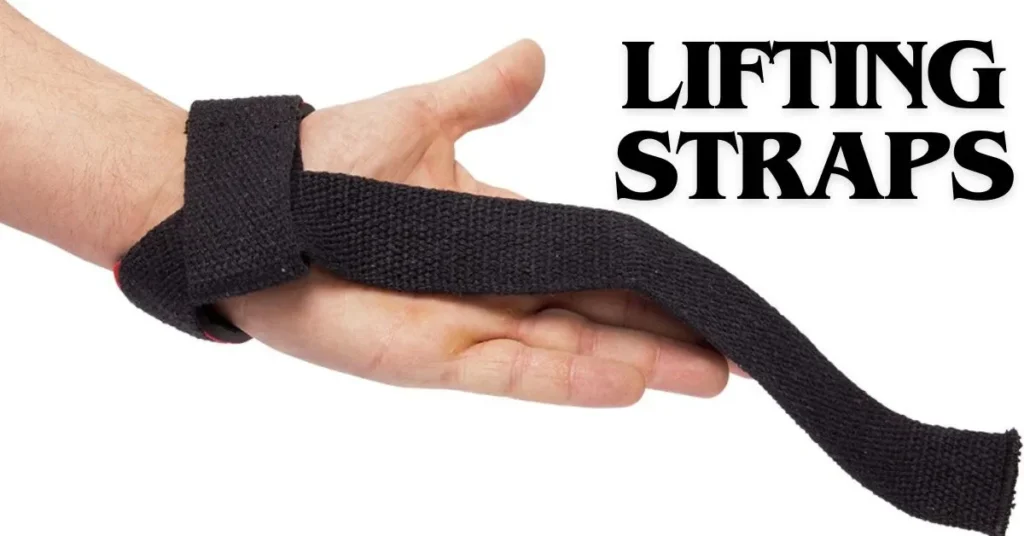If you’ve ever found yourself struggling to maintain a firm grip during your heavy lifts, then lifting straps might just be the game-changer you need. These simple yet effective tools can revolutionize your workout routine, helping you lift heavier weights and achieve your fitness goals faster. In this guide, we’ll dive deep into the world of lifting strap’s, explaining what they are, how to use them, and why they could be the best addition to your gym bag.
What Are Lifting Straps?
Lifting straps are essentially pieces of strong, durable fabric designed to wrap around your wrists and the barbell. They provide extra support and improve your grip strength, allowing you to focus more on your lifting technique rather than worrying about dropping the weight.
Often made from materials like cotton, nylon, or leather, lifting straps come in various styles to suit different needs. Some popular types include figure 8 straps, lasso straps, and closed-loop straps. Each type offers unique benefits, so it’s essential to choose the one that best fits your lifting style and goals.
Types of Lifting Straps:
- Figure 8 Straps: These are great for deadlifts and other pulling exercises. They wrap around your wrist and the barbell in a figure-eight shape, providing a secure grip.
- Lasso Straps: These are the most versatile and commonly used lifting straps. They have a loop at one end through which you thread the other end, allowing you to adjust the tightness.
- Closed-Loop Straps: These are simple loops that you slip your hands through. They are easy to use and perfect for quick transitions between sets.
Why Use Lifting Straps?
You might be wondering why you should incorporate lifting stra’ps into your workouts. Here are some compelling reasons to consider:
Enhanced Grip Strength:
One of the main benefits of using lifting straps is that they enhance your grip strength. When you lift heavy weights, your grip is often the first to give out, limiting your ability to push your muscles to their full potential. Lifting strap’s take the strain off your hands and fingers, allowing you to lift heavier weights and perform more reps.
Reduced Risk of Injury:
Lifting heavy weights without proper support can lead to injuries, especially to your wrists and forearms. Lifting strap’s provide additional support, helping to stabilize your wrists and reduce the risk of strains and sprains. This means you can lift more confidently and safely.
Improved Performance:
With lifting strap’s, you can focus more on your form and technique rather than worrying about your grip. This can lead to better overall performance and more significant gains in muscle strength and size. Whether you’re a powerlifter, bodybuilder, or just someone looking to get stronger, lifting strap’s can help you achieve your goals.
How to Use Lifting Straps:
Using lifting strap’s correctly is crucial to reap their full benefits. Here’s a step-by-step guide on how to use them:
- Position the Strap: Place the strap on your wrist, ensuring the end with the loop is facing your hand.
- Thread the Strap: Thread the loose end through the loop to create a secure fit around your wrist.
- Wrap the Strap Around the Bar: Once your wrist is secure, wrap the loose end around the barbell. Ensure it’s tight enough to provide support but not so tight that it cuts off circulation.
- Grip the Bar: After wrapping the strap around the bar, grip the barbell as usual. The strap should provide extra support and help you maintain a firm grip.
Tips for Using Lifting Straps:
- Practice First: Before using lifting strap’s during heavy lifts, practice with lighter weights to get used to the feeling and ensure you’re using them correctly.
- Don’t Overuse Them: While lifting strap’s are beneficial, don’t rely on them for every lift. Use them primarily for heavy sets or when your grip is the limiting factor.
- Maintain the Straps: Keep your lifting strap’s in good condition. Check them regularly for wear and tear, and replace them when necessary to ensure your safety.
When to Use Lifting Straps:
Knowing when to use lifting straps can make a significant difference in your workout effectiveness. Here are some scenarios where lifting straps can be particularly beneficial:
Heavy Lifting Days:
On days when you’re focusing on heavy lifts like deadlifts, rows, or shrugs, lifting straps can be a lifesaver. They help you maintain a strong grip, allowing you to lift heavier weights and complete your sets with proper form.
High-Rep Workouts:
During high-rep workouts, your grip can fatigue quickly, making it challenging to complete your sets. Lifting strap’s can help you maintain your grip strength throughout the workout, ensuring you get the most out of every rep.
When Recovering from Injury:
If you’re recovering from a wrist or hand injury, lifting straps can provide the extra support you need to continue lifting without aggravating your injury. They help take some of the pressure off your hands and wrists, allowing you to train safely.
Common Myths About Lifting Straps:
Despite their benefits, lifting strap’s are often misunderstood. Let’s debunk some common myths:
Myth 1: Lifting Straps Are Only for Beginners
Some people believe that only beginners need lifting straps. However, even experienced lifters can benefit from using them, especially when lifting heavy weights or performing high-rep sets. Lifting straps are a tool to enhance your performance, regardless of your experience level.
Myth 2: Lifting Straps Weaken Your Grip
Another common myth is that using lifting straps will weaken your grip over time. In reality, lifting strap’s are meant to supplement your grip strength, not replace it. You can still perform grip-strengthening exercises alongside using lifting straps to maintain and even improve your grip strength.
Myth 3: All Lifting Straps Are the Same
As mentioned earlier, there are different types of lifting straps, each designed for specific purposes. It’s essential to choose the right type of strap for your needs to get the best results. Not all lifting strap’s are created equal, so understanding their differences is crucial.
Choosing the Right Lifting Straps:
With various lifting strap’s available on the market, selecting the right pair can be daunting. Here are some factors to consider:
Material:
Lifting straps come in different materials, including cotton, nylon, and leather. Cotton straps are comfortable and affordable, while nylon straps are more durable and resistant to wear and tear. Leather straps offer the best durability but can be more expensive. Choose a material that fits your budget and durability needs.
Length and Width:
The length and width of the lifting strap’s can affect their comfort and functionality. Longer straps provide more wraps around the bar, offering a more secure grip, while wider straps distribute pressure more evenly across your wrist. Try different lengths and widths to see what works best for you.
Padding:
Some lifting strap’s come with added padding for extra comfort. If you find that regular straps dig into your skin or cause discomfort, padded straps might be a better option for you. They provide additional cushioning, making them more comfortable during heavy lifts.
Caring for Your Lifting Straps:
Proper care can extend the life of your lifting strap’s and ensure they remain effective. Here are some tips for maintaining your straps:
Regular Inspection:
Inspect your lifting strap’s regularly for signs of wear and tear. Look for fraying, loose stitching, or any other damage that could compromise their integrity. Replace your straps if you notice any significant damage.
Cleaning:
Keeping your lifting strap’s clean is essential, especially if you use them frequently. Most cotton and nylon straps can be hand-washed with mild soap and water. Avoid using harsh detergents or bleach, as they can weaken the fabric. Allow your straps to air dry completely before using them again.
Proper Storage:
Store your lifting strap’s in a cool, dry place when not in use. Avoid leaving them in direct sunlight or damp areas, as this can degrade the material over time. Keeping them in your gym bag or a designated spot in your home gym can help protect them from damage.
The Role of Lifting Straps in Different Sports:
Lifting straps aren’t just for bodybuilders or powerlifters. They can be beneficial in various sports and fitness disciplines. Here’s how athletes in different sports can benefit from using lifting straps:
CrossFit:
In CrossFit, athletes perform a variety of lifts and high-intensity workouts. Lifting straps can help CrossFit athletes maintain their grip during heavy lifts and high-rep sets, improving their performance and reducing the risk of injury.
Olympic Weightlifting:
Olympic weightlifters often lift extremely heavy weights. Lifting strap’s can provide the extra grip strength needed for clean and jerk or snatch exercises, allowing weightlifters to focus on their technique and lift heavier weights safely.
Strongman Competitions:
Strongman athletes lift and carry incredibly heavy objects, often with awkward grips. Lifting straps are crucial for these athletes, helping them maintain a strong grip on objects like atlas stones, logs, and farmer’s walk handles. This support allows them to lift heavier and perform better in competitions.
Conclusion:
Lifting strap’s are a valuable tool for anyone looking to enhance their lifting performance. By providing extra grip strength and support, they allow you to lift heavier weights, reduce the risk of injury, and improve your overall workout effectiveness. Whether you’re a seasoned lifter or just starting, incorporating lifting straps into your routine can help you reach your fitness goals faster.
Remember to choose the right type of lifting strap’s for your needs, use them correctly, and maintain them properly to ensure they remain effective. With the right lifting straps, you can take your lifting game to the next level and achieve the strength and muscle gains you’ve been working towards. Happy lifting!







